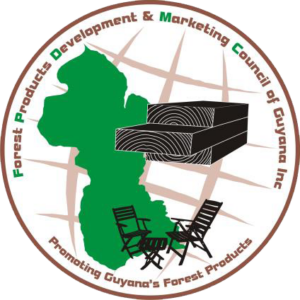Black kakaralli as an Alternative Use for Construction (Piling and Other Marine Construction)
Black kakaralli is a timber species found in abundant quantities in Guyana especially in Region 6.
It has strong physical and mechanical properties similar to Greenheart; this has been confirmed by extensive credible scientific research and physical testing.
It can be used as an alternative to Greenheart for marine construction and other heavy construction that requires piling and where the first choice is Greenheart piles. Below are some of the main features and properties of this species.
Tree and Wood Profile of Black Kakaralli
Common Name: Black Kakaralli
Species: Eschweilera sagotiana (most common); E. subglanduosa
Family: Lecythidaceae
Range: Northern South America – Guyana, Suriname, French Guiana, Venezuela and northern Brazil.
Habitat & Ecology: Primarily found in wet tropical forest biomes. It is a characteristic species of Mixed Forests in Guyana. Found in frequently Mixed Forests on Laterite, and in Mora Forests but generally has a wide distribution.
Tree Description: Evergreen tree that often grows up to 40 m tall and 60 cm in diameter. Crown is oval shaped with dense branches that can range from erect to spreading. Base may be straight or buttressed. Bark is grey, dark brown or red brown. Dead bark is 1-3mm thick, and dark brown with a lighter brown layer inside. Living bark is 3-5mm thick, light brown or pink, fibrous and tough, and smells of linseed oil. These species are hard to distinguish in the fields from E. decolorans (smooth leaf kakaralli).
| Appearance | Mechanical Properties | Timber Processing | Durability | Uses |
| Sapwood: Light grey or greenish brown Heartwood: Pale greyish Brown to Dark brown Grain: Straight Texture: Fine to medium. | Air dried density (12%) – 1.07 g/cm3Bending strength (at 12%) – 182 N/mm2Modulus of elasticity (at 12%) – 21,635 N/mm2Crushing strength (at 12%) – 77 N/mm2 | Drying – Moderately difficult to air-dry. There is slight risk of distortion, checking and case hardening. Working – Power is required for sawing and blunting effect is high (due to silica). Special tools are needed due to hardness and silica content. Assembly – Gluing is difficult and pre-boring is necessary. Finishing – Good. | Very good resistance to: Decay Termites Dry Wood insects Very resistant to marine borers. Poor treatability | Ship building, marine construction, piles and post, heavy carpentry, frame building |

